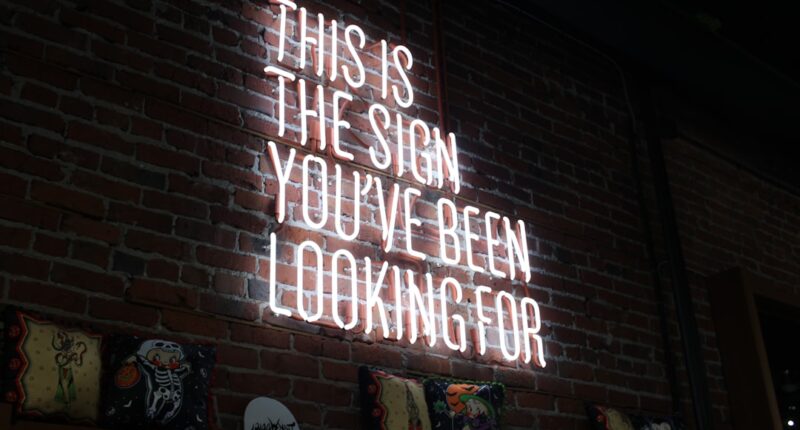Non-fungible tokens (NFTs) are unique digital assets that represent ownership or authenticity of specific items or content, such as artwork, videos, music, or tweets. Unlike fungible cryptocurrencies like Bitcoin or Ethereum, NFTs cannot be exchanged on a one-to-one basis due to their unique nature. NFTs utilize blockchain technology, a decentralized digital ledger that records transactions across multiple computers.
This ensures the security and authenticity of NFTs, as each token is verified and cannot be duplicated or altered. Purchasing an NFT involves buying a digital certificate of ownership stored on the blockchain, which can be transferred or sold like other assets. The ownership and transaction history of NFTs are transparent and publicly accessible.
In recent years, NFTs have gained popularity in the art world, with artists and creators selling digital artwork and collectibles. NFTs have also found applications in gaming, music, and sports memorabilia industries. The potential uses of NFTs are extensive, and their impact on the digital economy is still being explored.
As the NFT market grows, it is crucial for creators and consumers to understand the underlying technology and its applications in buying, selling, and trading digital assets.
Creating Your Own NFT: Step-by-Step Guide
Choosing Your Content
The first step in creating your own NFT is to select the digital content you want to tokenize. This can be a piece of digital artwork, a video clip, a piece of music, or any other digital asset that you own the rights to.
Selecting a Platform and Setting Up a Digital Wallet
Once you have chosen your content, you’ll need to select a platform to create and sell your NFT. There are several NFT marketplaces available, such as OpenSea, Rarible, and Foundation, each with its own set of features and requirements. After choosing a platform, you’ll need to create a digital wallet to store your cryptocurrency and NFTs. This wallet will be used to pay for gas fees (transaction fees on the blockchain) and to receive payments for your NFT sales.
Creating and Listing Your NFT
With your wallet set up, you can then upload your content to the chosen marketplace and create your NFT. This process typically involves providing a title, description, and any additional metadata for your NFT, as well as setting a price and royalty percentage for future sales.
Promoting and Selling Your NFT
Once your NFT is created and listed for sale, you can begin promoting it to potential buyers through social media, forums, and other online channels. It’s important to engage with your audience and build a community around your NFTs to increase visibility and attract potential buyers. With time, effort, and dedication, creating and selling NFTs can be a rewarding experience.
Selling Your NFT: Tips for Success

Selling your NFT can be an exciting and potentially lucrative endeavor, but it’s important to approach it with a clear strategy and understanding of the market. One key tip for success is to carefully consider the pricing of your NFT. Setting the right price for your digital asset can be challenging, as it depends on factors such as the quality of the content, your reputation as an artist or creator, and the current demand for similar NFTs in the market.
It’s important to research similar NFTs and their selling prices to get an idea of what buyers are willing to pay. Another important tip is to build a strong online presence and engage with your audience. Social media platforms like Twitter, Instagram, and Discord are popular channels for promoting NFTs and connecting with potential buyers.
By sharing behind-the-scenes content, updates on new releases, and engaging with your followers, you can build a community around your work and increase interest in your NFTs. Additionally, participating in online communities and forums related to NFTs can help you network with other creators and gain valuable insights into the market. Finally, it’s crucial to stay informed about the latest trends and developments in the NFT market.
The industry is constantly evolving, with new platforms, technologies, and opportunities emerging regularly. By staying up-to-date with industry news and trends, you can adapt your strategy and take advantage of new opportunities as they arise. Selling NFTs requires a combination of creativity, business acumen, and adaptability, but with the right approach, it can be a rewarding way to monetize your digital creations.
NFT Artists: How to Get Started and Succeed in the NFT Market
| Metrics | Description |
|---|---|
| Artistic Style | Define your unique artistic style to stand out in the NFT market. |
| Market Research | Conduct thorough research on NFT platforms and trends to understand the market. |
| Community Engagement | Build a strong presence on social media and engage with the NFT community. |
| Quality of Artwork | Ensure high-quality and original artwork to attract collectors. |
| Pricing Strategy | Develop a pricing strategy that reflects the value of your artwork and resonates with collectors. |
| Legal Considerations | Understand the legal aspects of NFTs and copyright laws to protect your work. |
For artists looking to break into the world of NFTs, there are several key steps to consider in order to get started and succeed in this rapidly growing market. First and foremost, it’s important to create high-quality and original digital artwork that will resonate with potential buyers. The NFT market is highly competitive, so standing out from the crowd with unique and compelling content is essential.
Whether you’re a digital artist, illustrator, animator, or graphic designer, focusing on creating work that showcases your individual style and vision can help attract collectors and enthusiasts. Once you have created your digital artwork, the next step is to research and choose the right NFT marketplace to sell your work. Each platform has its own set of features, requirements, and community of buyers, so it’s important to consider which one aligns best with your goals and target audience.
Some platforms may cater more towards specific types of artwork or have different fee structures, so it’s worth exploring your options before making a decision. In addition to creating and selling your artwork as NFTs, it’s also important to engage with the community and build a strong online presence. Participating in online forums, social media groups, and virtual events related to NFTs can help you connect with other artists, collectors, and enthusiasts.
Building relationships within the community can lead to collaborations, partnerships, and opportunities for exposure that can help elevate your work in the market.
NFT Jobs: Opportunities in the NFT Industry
The rise of NFTs has created a range of new job opportunities across various sectors within the industry. From artists and creators to developers and marketers, there are numerous roles that have emerged as a result of the growing demand for NFT-related services. For artists and creators, there are opportunities to sell digital artwork as NFTs or collaborate with brands and platforms on exclusive releases.
Many artists have found success in creating limited edition NFT collections or offering custom commissions through NFT marketplaces. Developers and technologists also play a crucial role in the NFT industry by building the infrastructure that powers NFT marketplaces and platforms. From smart contracts to decentralized applications (dApps), there is a growing demand for developers with expertise in blockchain technology and cryptocurrency.
Additionally, there are opportunities for marketers and community managers to help promote NFT projects, engage with audiences, and build brand awareness within the community. As the industry continues to evolve, there will likely be new roles and opportunities that emerge within the NFT space. Whether you’re an artist looking to monetize your digital creations or a technologist interested in blockchain development, there are numerous ways to get involved in this exciting industry.
NFT News: Latest Developments and Trends in the NFT Market

Sustainable Blockchain Solutions
In response to growing concerns about the environmental impact of blockchain technology, eco-friendly solutions for minting NFTs have gained popularity. These sustainable alternatives consume less energy, catering to environmentally conscious artists and collectors. Several platforms now offer environmentally friendly options for creating and selling NFTs.
Fractionalized Ownership
Another significant development in the NFT market is the rise of fractionalized ownership. This concept allows multiple individuals to own a fraction of an NFT, making high-value assets more accessible to a broader audience. Fractionalized ownership has opened up new investment opportunities in digital art and collectibles, as well as collaboration possibilities among collectors.
Inclusivity and Diversity
The NFT space is also shifting towards greater inclusivity and diversity. Many platforms are actively working to create more inclusive environments for underrepresented artists and creators by offering support programs, grants, and mentorship opportunities. This increased focus on diversity is expected to have a profound impact on the NFT market, fostering a more vibrant and diverse community of artists and collectors.
Navigating the Legal and Ethical Considerations of NFTs
As with any emerging technology or market, navigating the legal and ethical considerations of NFTs is crucial for both creators and consumers. One key legal consideration is copyright ownership of digital assets sold as NFTs. It’s important for creators to ensure they have the rights to sell their work as an NFT before listing it on a marketplace.
Additionally, buyers should be aware of any copyright or licensing agreements associated with an NFT before making a purchase. Another legal consideration is the potential for disputes over ownership or authenticity of an NFT. Blockchain technology provides a level of transparency and security for transactions, but there may still be legal challenges related to fraud or misrepresentation in some cases.
From an ethical standpoint, there are considerations around environmental impact due to the energy consumption of blockchain networks used for minting NFTs. Artists and platforms may want to consider eco-friendly alternatives or offsetting their carbon footprint through initiatives such as tree planting or renewable energy credits. Overall, staying informed about the legal and ethical implications of participating in the NFT market is essential for all stakeholders involved.
As the industry continues to evolve, it’s important for creators, platforms, and consumers to prioritize transparency, accountability, and responsible practices in order to ensure a sustainable future for NFTs.
If you’re interested in learning more about how to create and sell NFTs, you should check out this article on NFT-Jobs. This website offers valuable insights and resources for those looking to enter the world of non-fungible tokens. Whether you’re an artist, collector, or entrepreneur, NFT-Jobs has the information you need to get started in this exciting and rapidly growing industry.
FAQs
What is an NFT?
An NFT, or non-fungible token, is a digital asset that represents ownership or proof of authenticity of a unique item or piece of content, such as artwork, music, videos, or collectibles, using blockchain technology.
How do you create an NFT?
To create an NFT, you can use a blockchain platform that supports NFT creation, such as Ethereum or Binance Smart Chain. You will need to upload your digital file, such as an image, video, or audio, and follow the platform’s instructions to mint the NFT, which involves creating a unique token on the blockchain.
How do you sell an NFT?
To sell an NFT, you can list it on a marketplace that supports NFT trading, such as OpenSea, Rarible, or Foundation. You will need to connect your digital wallet to the marketplace, set a price for your NFT, and follow the platform’s instructions to list it for sale.
What can be sold as an NFT?
Almost any digital file can be sold as an NFT, including artwork, music, videos, virtual real estate, virtual goods, and collectibles. The key requirement is that the digital file is unique and can be tokenized on a blockchain.
What are the benefits of selling NFTs?
Selling NFTs can provide creators with a new way to monetize their digital content, as well as offer collectors a way to own and trade unique digital assets. NFTs also provide proof of ownership and authenticity through blockchain technology.
What are the risks of selling NFTs?
Some of the risks of selling NFTs include market volatility, potential copyright infringement issues, and the environmental impact of blockchain technology. Additionally, there is the risk of scams and fraud in the NFT space, so it’s important to do thorough research and use reputable platforms.





